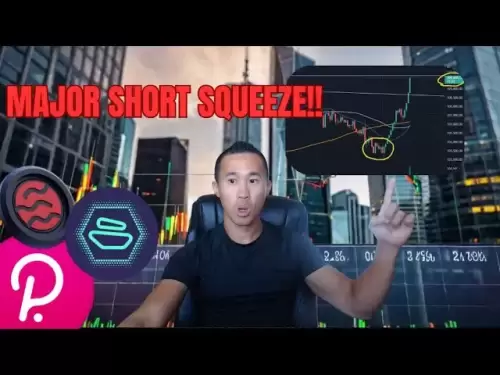-
 Bitcoin
Bitcoin $108,270.9768
2.07% -
 Ethereum
Ethereum $2,489.8066
2.50% -
 Tether USDt
Tether USDt $1.0004
0.01% -
 XRP
XRP $2.2035
0.66% -
 BNB
BNB $661.6608
2.32% -
 Solana
Solana $150.6425
2.13% -
 USDC
USDC $0.9999
-0.01% -
 TRON
TRON $0.2810
0.90% -
 Dogecoin
Dogecoin $0.1645
3.05% -
 Cardano
Cardano $0.5743
4.91% -
 Hyperliquid
Hyperliquid $38.8419
-0.15% -
 Bitcoin Cash
Bitcoin Cash $504.3134
-2.64% -
 Sui
Sui $2.8096
4.35% -
 Chainlink
Chainlink $13.3095
2.21% -
 UNUS SED LEO
UNUS SED LEO $8.9469
0.33% -
 Avalanche
Avalanche $17.9231
3.93% -
 Stellar
Stellar $0.2340
0.74% -
 Toncoin
Toncoin $2.8458
3.21% -
 Shiba Inu
Shiba Inu $0.0...01158
3.47% -
 Litecoin
Litecoin $86.0738
1.94% -
 Hedera
Hedera $0.1507
2.99% -
 Monero
Monero $319.8544
2.31% -
 Polkadot
Polkadot $3.4081
1.95% -
 Dai
Dai $1.0000
0.01% -
 Bitget Token
Bitget Token $4.5645
0.91% -
 Ethena USDe
Ethena USDe $1.0002
0.00% -
 Uniswap
Uniswap $7.2959
5.27% -
 Aave
Aave $272.4623
2.90% -
 Pepe
Pepe $0.0...09680
2.96% -
 Pi
Pi $0.4955
0.78%
Is a breakout of the 60-day moving average followed by a pullback without a break a short-term buy signal?
A breakout above the 60-day moving average followed by a pullback that respects it can signal a low-risk buy opportunity in crypto trading.
Jul 02, 2025 at 10:57 am

Understanding the 60-Day Moving Average in Cryptocurrency Trading
The 60-day moving average is a widely used technical indicator in cryptocurrency trading. It helps traders assess the long-term trend of an asset by smoothing out price data over the last 60 days. Traders often use this moving average to identify potential support or resistance levels. When a cryptocurrency's price breaks above this key level, it can signal a shift in momentum. However, understanding whether such a breakout followed by a pullback without breaking the average constitutes a short-term buy signal requires deeper analysis.
Why the 60-day moving average matters:
- It filters out short-term volatility, offering clearer insight into medium-term trends.
- Acts as a dynamic support or resistance level during trending markets.
- Helps traders time entries and exits more effectively when combined with other indicators.
Analyzing Breakouts from the 60-Day Moving Average
A breakout occurs when the price moves above the 60-day moving average after a period of consolidation or downtrend. This movement often signals that buyers are gaining control. In crypto markets, where volatility is high, breakouts can be powerful but also prone to false signals. Therefore, traders must verify the strength of the breakout using volume and additional technical tools.
Key factors to consider during a breakout:
- Volume: A valid breakout usually comes with increased trading volume, confirming institutional or retail interest.
- Price action confirmation: At least two consecutive candlesticks closing above the 60-day MA increase the reliability of the breakout.
- Market context: The broader market sentiment, including Bitcoin’s performance, should align with the breakout direction.
Pullbacks Without Breaking the 60-Day MA: What Does It Mean?
After a breakout, a pullback is common. If the price retraces to the 60-day moving average but doesn’t close below it, this suggests strong underlying demand. Such behavior indicates that the moving average is acting as a dynamic support, reinforcing its importance as a psychological level.
Characteristics of a healthy pullback:
- The price touches or hovers around the 60-day MA without decisively breaking it.
- Volume typically decreases during the pullback, signaling lack of selling pressure.
- The pullback doesn't erase more than 50% of the initial breakout move.
This type of pullback is often seen as a low-risk entry point for traders who missed the initial breakout.
Combining Indicators to Confirm Buy Signals
Relying solely on the 60-day moving average and pullback pattern can lead to premature trades. To strengthen the validity of the short-term buy signal, traders should incorporate additional tools:
Recommended confirmatory indicators:
- Relative Strength Index (RSI): Look for RSI to remain above 40 during the pullback, suggesting no extreme oversold condition yet.
- MACD: A bullish crossover or rising histogram confirms increasing buying momentum.
- Volume profile: Areas with high volume near the 60-day MA indicate strong support zones.
These indicators help filter out false signals and provide higher probability setups.
Executing a Trade Based on This Setup
Once the conditions align — a breakout above the 60-day MA followed by a pullback that respects it — traders can consider entering a position. Here’s how to structure the trade:
Step-by-step execution:
- Wait for the price to retest the 60-day MA after a confirmed breakout.
- Ensure that the candlestick closes above the MA during the retest.
- Place a buy order slightly above the close of the retest candlestick to avoid slippage.
- Set a stop-loss just below the 60-day MA to contain risk.
- Target a risk-reward ratio of at least 2:1 based on the size of the breakout move.
Using limit orders rather than market orders can improve entry precision, especially in fast-moving crypto markets.
Frequently Asked Questions
Q: Can this strategy work on all cryptocurrencies?
While the 60-day moving average is applicable across various assets, it works best on major cryptocurrencies with sufficient liquidity and volume. Smaller altcoins may produce erratic signals due to low trading activity.
Q: How often should I check if the price is respecting the 60-day MA?
Daily checks are recommended, especially after a breakout. Use daily charts to monitor the interaction between price and the moving average.
Q: Is this approach suitable for day trading?
This setup is more aligned with swing trading strategies. Day traders might find shorter timeframes and moving averages more effective for intraday decisions.
Q: What if the pullback turns into a full reversal below the 60-day MA?
That would invalidate the setup. Traders should exit immediately if the price closes decisively below the 60-day MA after a pullback, as it could signal a resumption of the downtrend.
Disclaimer:info@kdj.com
The information provided is not trading advice. kdj.com does not assume any responsibility for any investments made based on the information provided in this article. Cryptocurrencies are highly volatile and it is highly recommended that you invest with caution after thorough research!
If you believe that the content used on this website infringes your copyright, please contact us immediately (info@kdj.com) and we will delete it promptly.
- XRP Price Targets $2.40 After Descending Channel Breakout: Is $40 Next?
- 2025-07-03 08:50:12
- All Blacks' Loose Forward Conundrum: New Faces and Familiar Battles
- 2025-07-03 08:30:12
- Bitcoin's Wild Ride: Open Interest, Institutional Bets, and Billions on the Line
- 2025-07-03 08:30:12
- Bitcoin, Strategy, & Profit: MSTR's Crypto Playbook and Trump's Digital Diversification
- 2025-07-03 08:50:12
- Bitcoin on the Brink: Active Supply Signals Potential Rally
- 2025-07-03 06:30:12
- Solana, XRP, SEI: Altcoin Titans and the Next Big Thing
- 2025-07-03 06:50:12
Related knowledge
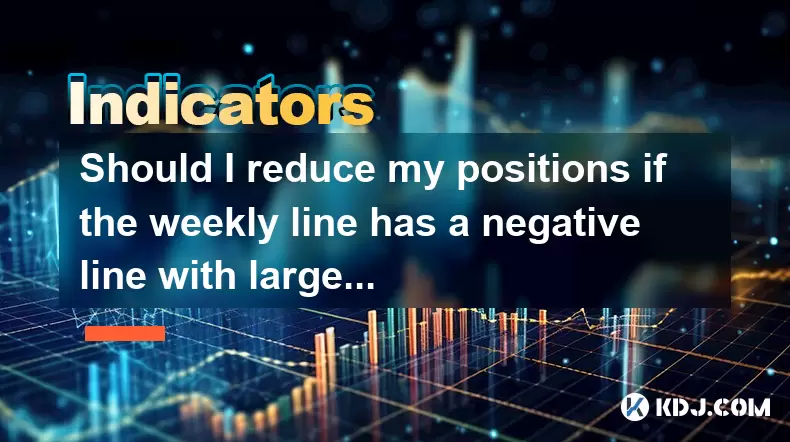
Should I reduce my positions if the weekly line has a negative line with large volume + the daily line falls below the middle Bollinger line?
Jul 01,2025 at 10:50pm
Understanding the Weekly Line with Negative Candle and Large VolumeWhen analyzing cryptocurrency charts, a weekly line that forms a negative candle accompanied by large volume is often interpreted as a strong bearish signal. This pattern suggests that institutional or large traders are actively selling their positions, which can foreshadow further price...
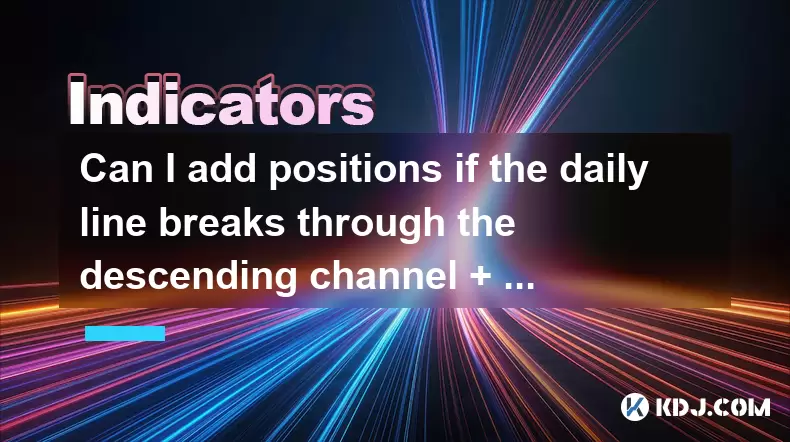
Can I add positions if the daily line breaks through the descending channel + the 30-minute moving average is in a bullish arrangement?
Jun 30,2025 at 11:00pm
Understanding the Descending Channel BreakoutWhen a daily line breaks through a descending channel, it indicates a potential shift in market sentiment from bearish to bullish. A descending channel is formed by drawing two parallel trendlines, where the upper trendline connects the lower highs and the lower trendline connects the lower lows. A breakout o...
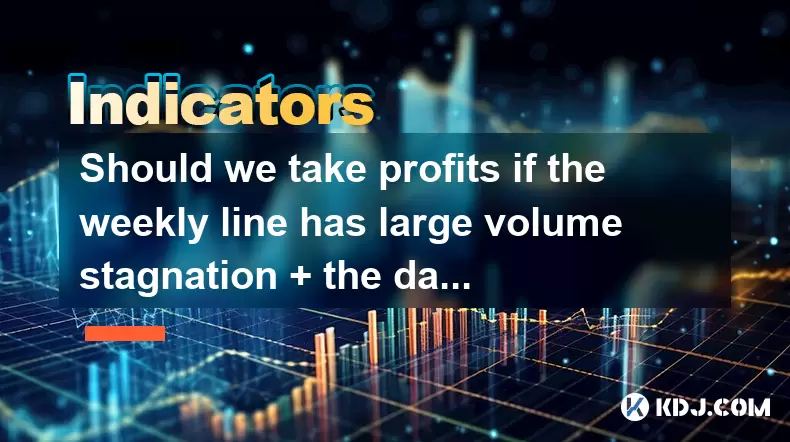
Should we take profits if the weekly line has large volume stagnation + the daily RSI top divergence?
Jul 01,2025 at 05:22pm
Understanding Weekly Volume Stagnation in Cryptocurrency TradingIn cryptocurrency trading, weekly volume stagnation refers to a situation where the total trading volume over a week remains relatively flat or shows no significant increase despite price movements. This phenomenon can indicate that institutional or large traders are not actively participat...
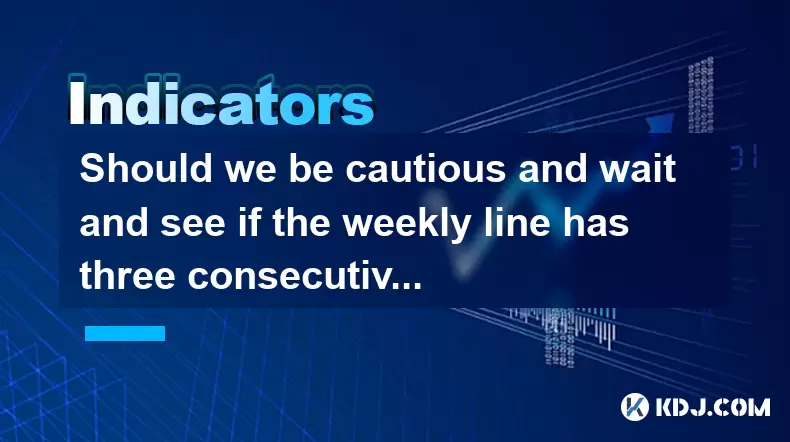
Should we be cautious and wait and see if the weekly line has three consecutive Yin lines + the daily MACD green column enlarges?
Jul 01,2025 at 12:42am
Understanding the Weekly Three Consecutive Yin Lines PatternIn technical analysis, three consecutive Yin lines on a weekly chart indicate a strong bearish trend. Each Yin line represents a week where the closing price is lower than the opening price, signaling consistent selling pressure. When this pattern appears three times in succession, it often sug...
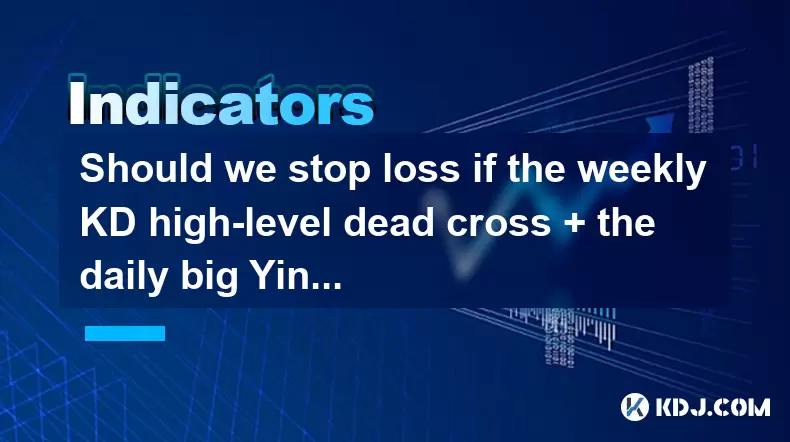
Should we stop loss if the weekly KD high-level dead cross + the daily big Yin line breaks?
Jul 01,2025 at 09:49pm
Understanding the Weekly KD High-Level Dead CrossIn technical analysis, KD (K-D indicator) is a momentum oscillator that helps traders identify overbought or oversold conditions in the market. The weekly KD high-level dead cross occurs when both the K-line and D-line are above 80 (indicating overbought territory), and the K-line crosses below the D-line...
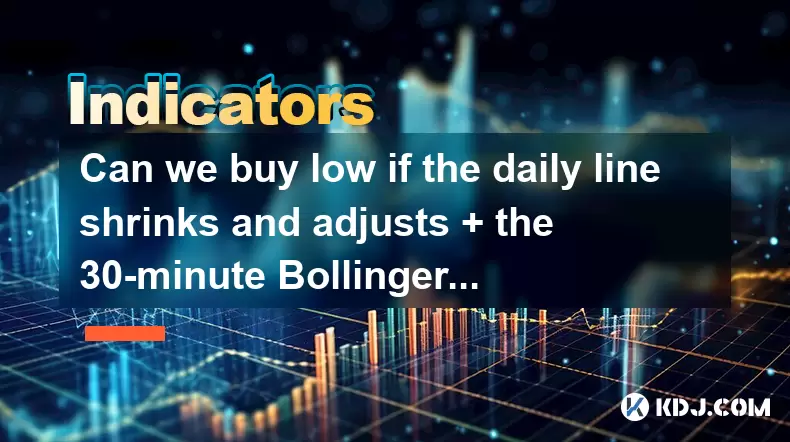
Can we buy low if the daily line shrinks and adjusts + the 30-minute Bollinger lower rail supports?
Jul 02,2025 at 12:29pm
Understanding the Technical Indicators: Bollinger Bands and Daily Line ShrinkingIn cryptocurrency trading, technical indicators play a critical role in identifying potential entry and exit points. The Bollinger Bands consist of a moving average (typically 20 periods) and two standard deviation lines plotted above and below it. When prices touch or appro...

Should I reduce my positions if the weekly line has a negative line with large volume + the daily line falls below the middle Bollinger line?
Jul 01,2025 at 10:50pm
Understanding the Weekly Line with Negative Candle and Large VolumeWhen analyzing cryptocurrency charts, a weekly line that forms a negative candle accompanied by large volume is often interpreted as a strong bearish signal. This pattern suggests that institutional or large traders are actively selling their positions, which can foreshadow further price...

Can I add positions if the daily line breaks through the descending channel + the 30-minute moving average is in a bullish arrangement?
Jun 30,2025 at 11:00pm
Understanding the Descending Channel BreakoutWhen a daily line breaks through a descending channel, it indicates a potential shift in market sentiment from bearish to bullish. A descending channel is formed by drawing two parallel trendlines, where the upper trendline connects the lower highs and the lower trendline connects the lower lows. A breakout o...

Should we take profits if the weekly line has large volume stagnation + the daily RSI top divergence?
Jul 01,2025 at 05:22pm
Understanding Weekly Volume Stagnation in Cryptocurrency TradingIn cryptocurrency trading, weekly volume stagnation refers to a situation where the total trading volume over a week remains relatively flat or shows no significant increase despite price movements. This phenomenon can indicate that institutional or large traders are not actively participat...

Should we be cautious and wait and see if the weekly line has three consecutive Yin lines + the daily MACD green column enlarges?
Jul 01,2025 at 12:42am
Understanding the Weekly Three Consecutive Yin Lines PatternIn technical analysis, three consecutive Yin lines on a weekly chart indicate a strong bearish trend. Each Yin line represents a week where the closing price is lower than the opening price, signaling consistent selling pressure. When this pattern appears three times in succession, it often sug...

Should we stop loss if the weekly KD high-level dead cross + the daily big Yin line breaks?
Jul 01,2025 at 09:49pm
Understanding the Weekly KD High-Level Dead CrossIn technical analysis, KD (K-D indicator) is a momentum oscillator that helps traders identify overbought or oversold conditions in the market. The weekly KD high-level dead cross occurs when both the K-line and D-line are above 80 (indicating overbought territory), and the K-line crosses below the D-line...

Can we buy low if the daily line shrinks and adjusts + the 30-minute Bollinger lower rail supports?
Jul 02,2025 at 12:29pm
Understanding the Technical Indicators: Bollinger Bands and Daily Line ShrinkingIn cryptocurrency trading, technical indicators play a critical role in identifying potential entry and exit points. The Bollinger Bands consist of a moving average (typically 20 periods) and two standard deviation lines plotted above and below it. When prices touch or appro...
See all articles





















